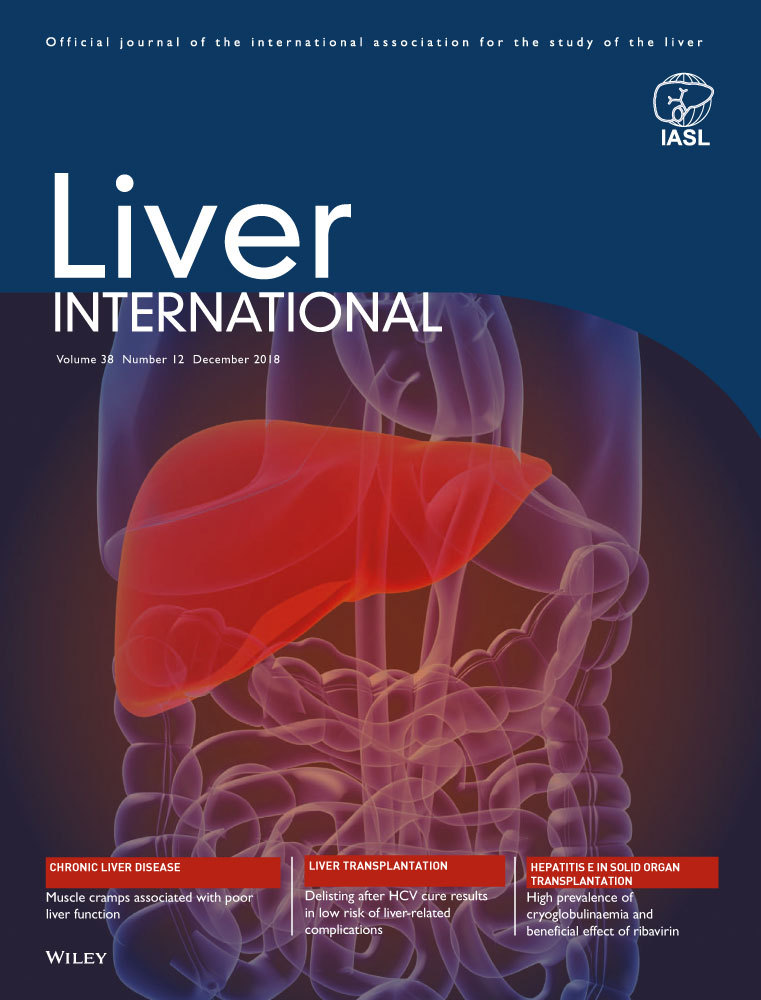Carbon-ion radiotherapy for HCC—A potential tool to fulfil an unmet gap in the treatment algorithms?
Abstract
See Article on Page 2239
A main concern in the treatment of hepatocellular carcinoma (HCC) is how to carefully select the therapeutic modalities that will increase survival and maintain quality of life based on the best scientific evidence available. For this purpose, staging systems and algorithms were designed to guide clinical practice worldwide.1 However, attempts to generate algorithms come up against the fact that treatments are evolving rapidly and there is a lack of clinical trials directly comparing different therapies in some particular settings.
For patients with intrahepatic disease without vascular invasion, the recommended approach involves hepatic resection, transplantation and image-guided tumour ablation.2 However, treatment of patients with liver-limited disease who are deemed ineligible for these modalities represents an unmet challenge as the decisions are usually empiric and influenced by local expertise and institutional practice.
In this context, emerging reports about the role of radiotherapy (RT) in HCC have been published.3, 4 In general terms, HCC is considered a radiosensitive tumour, but it is located in a radiosensitive organ that is very often affected by an underlying liver disease. For this reason, the development of research on RT for HCC has been held back by the potential risk of liver toxicity and the currently available guidelines do not support its utilization.2 The alternatives represented by the three-dimensional conformal radiation techniques, intensity-modulated RT and stereotactic RT appear to equate the risk-to-benefit ratio, but scarce evidence is available for their implementation.
In the current issue of Liver International, Shibuya et al5 reported the effectiveness and safety of short-course carbon-ion (CI) radiation therapy for HCC in a retrospective multicentre study conducted by the Japan Carbon-Ion Radiation Oncology Study Group. CI RT is a heavy-ion based technique that provides a higher biological impact owing to higher linear energy transfer, resulting in precise delivery of maximum energy to tumours while minimizing energy to the surrounding tissues.6 Published data from the Japanese experience with CI RT demonstrated efficacy against prostate cancer, pancreatic cancer, rectal cancer and lung cancer.7
Shibuya et al reported an overall survival rate of 73.3% and a local control rate of 81% at 3-years, with approximately 6% of grade 3-4 toxicities. The population analysed consisted of patients without extrahepatic spread (although 54% were classified as stage C, according to the Barcelona Clinic Liver Cancer [BCLC] stage system), with both naïve and pretreated disease, and around half of the patients were considered ineligible for surgery or ablation. Besides, 80% of the patients were 65-year-old or older which limited the feasibility for liver transplantation. Median tumour size was 3 cm. Local recurrence was observed in 12%, locoregional in 44.2% and distant metastases occurred in 8.6% during the follow-up of 20.3 months.
Notably, the population included in this study represents one of the above-mentioned unmet needs. Patients with contraindication or who progress or are refractory to locoregional strategies are often managed in a stage-migration approach, being offered systemic therapy or chemoembolization.1 In this regard, the performance reported for CI RT seems encouraging and motivates a deeper discussion.
The retrospective nature of the study precludes any definitive conclusion. The follow-up was short to evaluate a treatment with curative intent, and this should be explored in a prospective manner with a longer follow-up. A major point of discussion for CI RT is the ability of conventional imaging techniques in defining response, expected time-to-response as well as local recurrence. There is no data to support a correlation of image findings with the prediction of recurrence or pathological response. These issues warrant further clarification in order to properly design prospective and comparative trials.
Another question that should be further addressed is the ideal population to be tested for this novel therapy. Surgery, when feasible, provides extended survival and pathological information to assess risk of relapse.1 Ablation techniques have efficacy comparable with surgery in terms of survival benefit.8 Liver transplantation, when cautiously indicated, results in high rate of long-term survival for both the neoplasia and coexisting liver disease.9 On the other hand, the recommendations for patients with contraindication to local therapies are weakly defined. Patients classified as stage A according to the BCLC staging system can reach median overall survival beyond 50 months with transarterial chemoembolization (TACE),10 in a treatment migration strategy for refractoriness or contraindication to surgery or ablation. Similarly, BCLC B patients have extended survival when treated with sorafenib, which is the standard therapy for advanced stage.11 Finally, there are encouraging results with the use of stereotactic RT in locally advanced HCC, including patients with vascular invasion and multiple liver lesions.3 Altogether, the study from Shibuya et al may contribute to select a target population for further research.
The major experience with CI RT comes from the National Institute of Radiological Sciences, in Japan. Little experience has been reported from Western centres. There is a high-cost burden associated with construction, maintenance and operation of CI RT facilities. This concern is noteworthy and should be taken into consideration once prospective protocols are running. Actions directed to cost-saving would enhance the implementation of this modality in case prospective trials report positive findings.
In conclusion, HCC represents a field of research in which novel therapies are required, especially in subgroups ineligible for the traditional therapies. Toxicity and tolerability are major points due to the clinical complexity of HCC patients, and in this regard, CI RT seemed to be feasible and deserves further investigation.
CONFLICT OF INTEREST
Leonardo G Da Fonseca has received lecture fees from Bayer HealthCare.
Alejandro Forner has received lecture fees from Bayer HealthCare, MSD, Gilead and BTG, and Consultancy fees from Bayer HealthCare and Guerbet.
FUNDING INFORMATION
Alejandro Forner is supported by a grant from ISCIII (PI18/00542).




